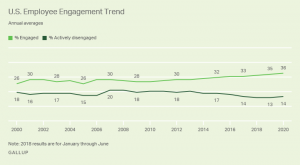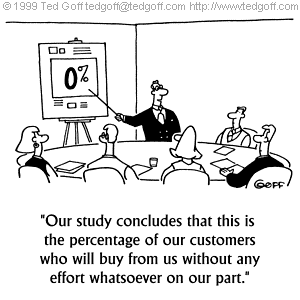Can we ensure that viewers will respond with delight to our display advertising every time? Contributor Alex LePage says no, but argues we’re getting close to being relevant at least.

Few people admit to loving online ads, but one thing is clear: Some ads are much more well-liked than others. Consumers prefer ads that are relevant to their interests, and such ads, of course, are much more likely to be effective and drive sales.
When marketers make a personal appeal to consumers — for example, serving ads for barbecue grills and accessories to consumers who have read an article titled “10 Ways to Spice Up the Backyard This Spring” — it’s not merely an ad but also a useful service.
The Different Types Of Intent Signals
The goal for marketers, then, is figuring out the consumer’s intent — what the consumer wants or plans to do at that moment or in the future.
The more marketers understand consumer intent, the more personalized and effective their ads will be.
In search marketing, the consumer’s intent is revealed by the terms entered into a search engine. What you search for is a great reflection of what you’re interested in buying, a simple fact that explains the monumental success of Google.
In programmatic marketing, intent data is often gathered through anonymous online behavior. Users reveal what they’re interested in by the sites and product pages they visit, and marketers can then target consumers with personalized ads based on the intent signals they’ve given off.
But intent data doesn’t begin and end with search and programmatic. It’s sometimes said that it can be hard to glean intent from Facebook “likes” because people will often “like” things even when they don’t have a special interest in them.
But social data extends far beyond Facebook. Every time we share a URL over email or “pin” an item on Pinterest, we’re giving off intent signals, and savvy marketers are getting better and better at picking up on these signals.
Indeed, Chartbeat, Parse.ly and other analytics services now make it easier than ever for publishers and marketers to gain a sophisticated understanding of how consumers share content and arrive at a given site.
Oftentimes, such as in the barbecue example above, a consumer’s intent is revealed simply by the given piece of content he or she is viewing. In such cases, marketers don’t even need tracking technology to deliver more personalized ads to consumers. The context of the content alone allows publishers to make accurate predictions about the intent of the people who consume the content.
Avoiding The Stalker Problem
There is one concern when it comes to mining social and other online behavior for intent signals. Marketers are now getting so good at it that they risk leaving consumers feeling as though they’re being stalked.
Consumers who look at a product on Amazon generally don’t mind seeing an ad for the product they’ve looked at. But they don’t want to see an ad for that product over and over as they browse the Web.
Smart marketers take this issue into account when planning their campaigns. Specifically, they make sure there are frequency caps in place so that a given consumer never views the same ad too many times. Even better, marketers can glean more intent data from the consumer along the way and serve different messages to that consumer throughout their decision-making journey.
Are we going to soon arrive at a point where consumers are delighted to see every ad? Probably not. But we are arriving at a point where every ad can be personalized according to what consumers are most interested in.
Intent data — whether it’s gleaned from social, search, browsing patterns, or the context of a webpage — makes advertising more relevant. That’s a great development for marketers and consumers alike.
Some opinions expressed in this article may be those of a guest author and not necessarily Marketing Land. Staff authors are listed here.
(Some images used under license from Shutterstock.com.)
Marketing Land – Internet Marketing News, Strategies & Tips
(277)









